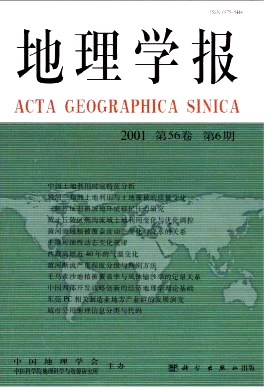LIU Yan sui
Taking northern slope of Qinling Mountains in Shaanxi Province as an example, This paper puts forward structural multiclass,functional multivariate and spatial arrangement of land type patterns based on systematic analysis of the spatial, quantitative and qualitative structures of land types, and completes the designs of optimal allocation models and schemes of land use in Qinling Mountains The conclusions are as follows: (1) The differentiation of land types in mountainous areas has its own spatial and temporal speciality In spatial dimension, with the change of altitude, the altitudinal differentiation of land types is formed, which represents different zones in a series; in temporal series, owing to the continuous change of natural environment and the influence of human economic activities, a reversible successive series in land use has been produced The speciality in space and time provides a theoretic foundation for the optimal allocation of land use in mountainous areas (2) Structural patterns obviously represent how different kinds of land types combine and their comparison in quality and quantity, which involves three kinds of structures, namely spatial, qualitative, quantitative structures The analysis of structural patterns can disclose the heterogeneity and orderliness of land types in structure and function, and then bring forward theoretical foundation for the design of allocation models in mountainous land use (3) The physical zonality, vulnerability in environment, multilevel and complexity of landscape determine the necessity and speciality in land use optimal allocation based on mountainous land structural patterns The optimal allocation of mountainous land use ought to obey the theories of landscape ecology and sustainable development, comprehensively analyze its ecological suitability in present land use, suitability of land types and scientific decision making in ecological design of mountainous land use, and advance the ecological model and measures to optimize the structure and layout in mountainous land use (4) The optimal allocation model of land use, in some sense, generalizes and describes systematic structural characteristics and functional attributes of mountainous land use In spatial dimension, it consists of three models in detail, namely macro regional, meso industrial and micro operational models The solution of optimal allocation is the concrete representation of the optimal allocation model in mountainous land use, which, virtually, is the optimization of industrial land use structure and layout, and is suitable and practical in mountainous land use Its implementation, however, ought to be brought into all round and special layouts of regional land use, get the support of the economic and social factors including investment, technology and labor as well as conversion of ethical ideology in land use.
